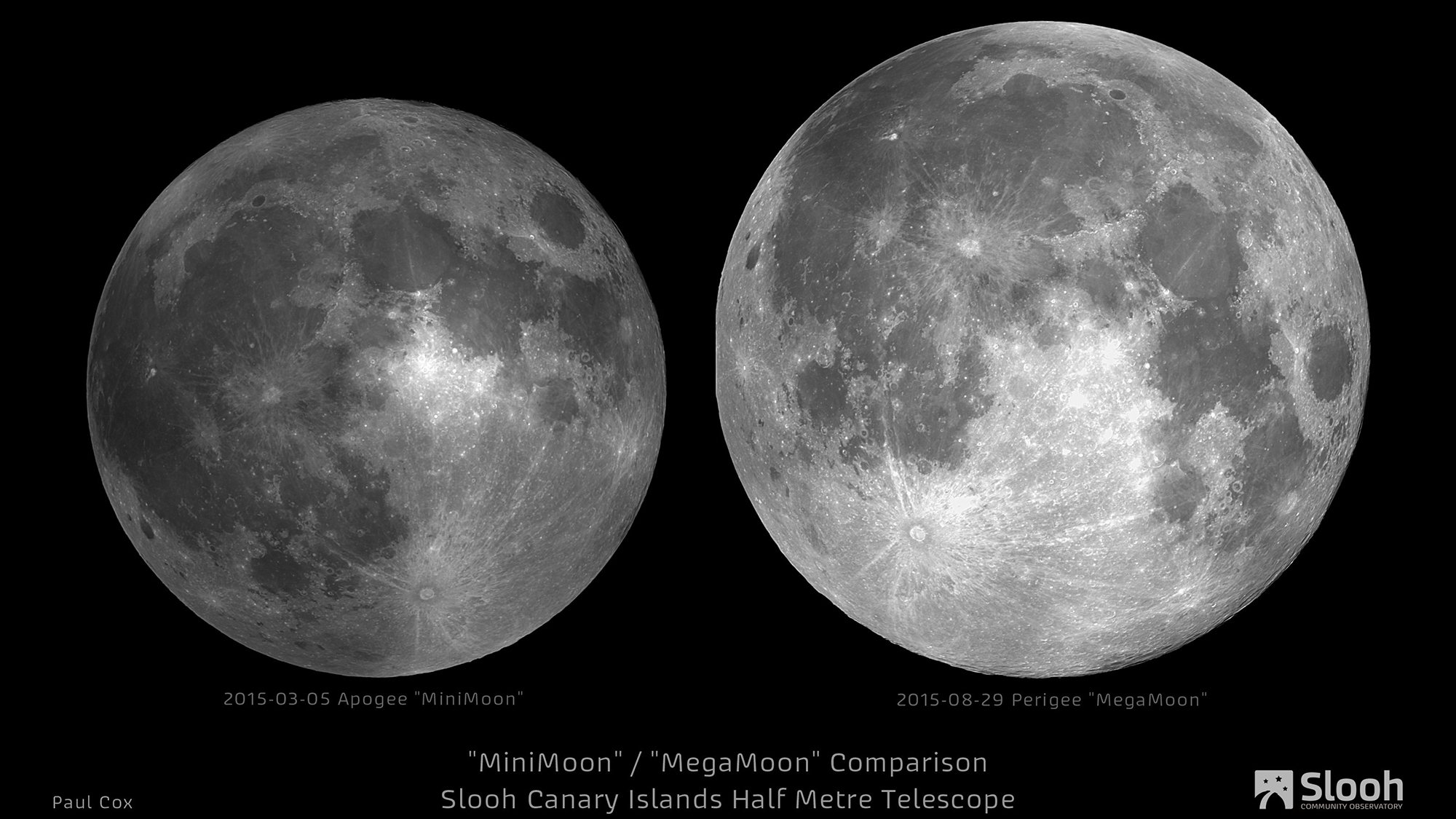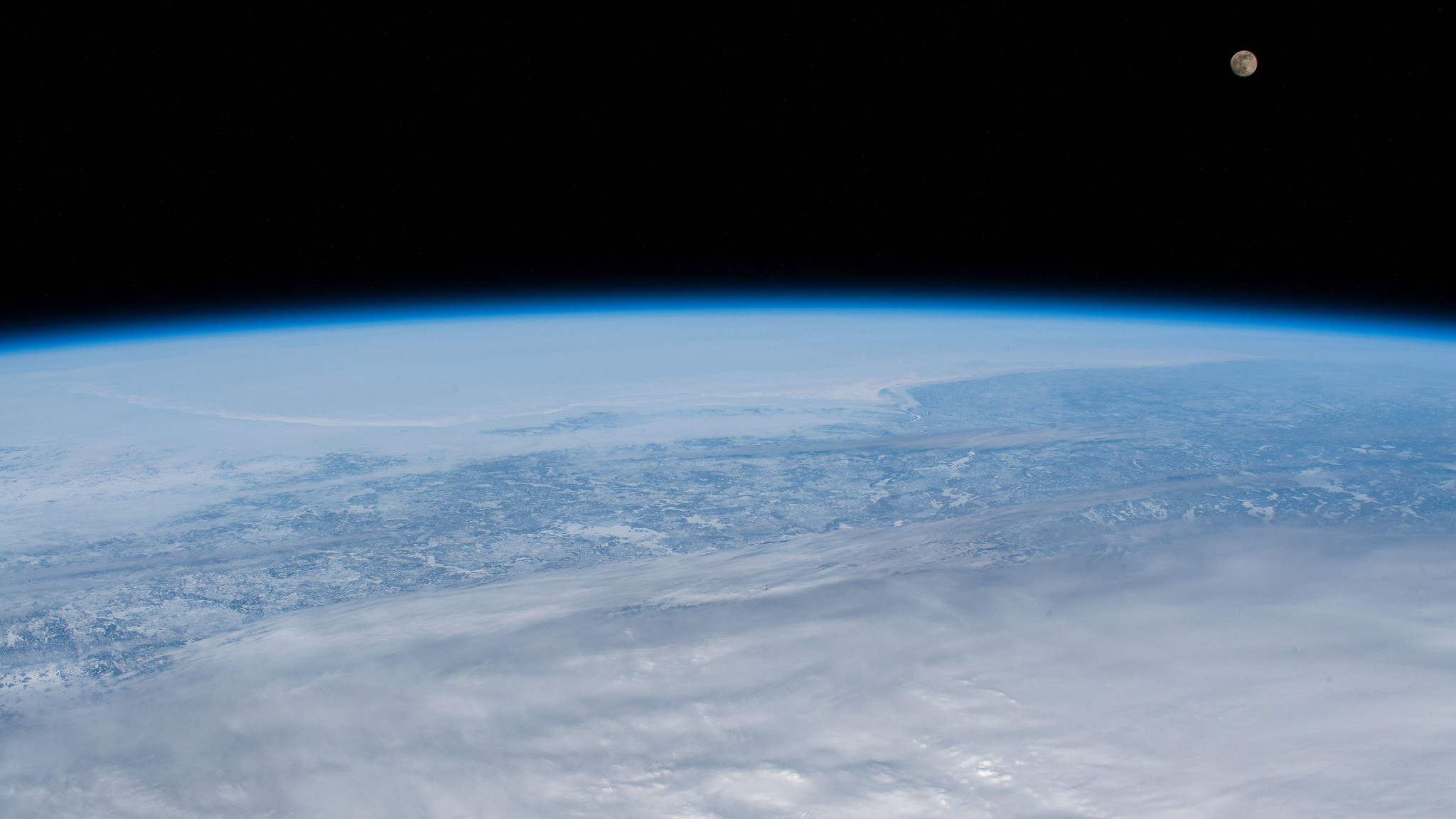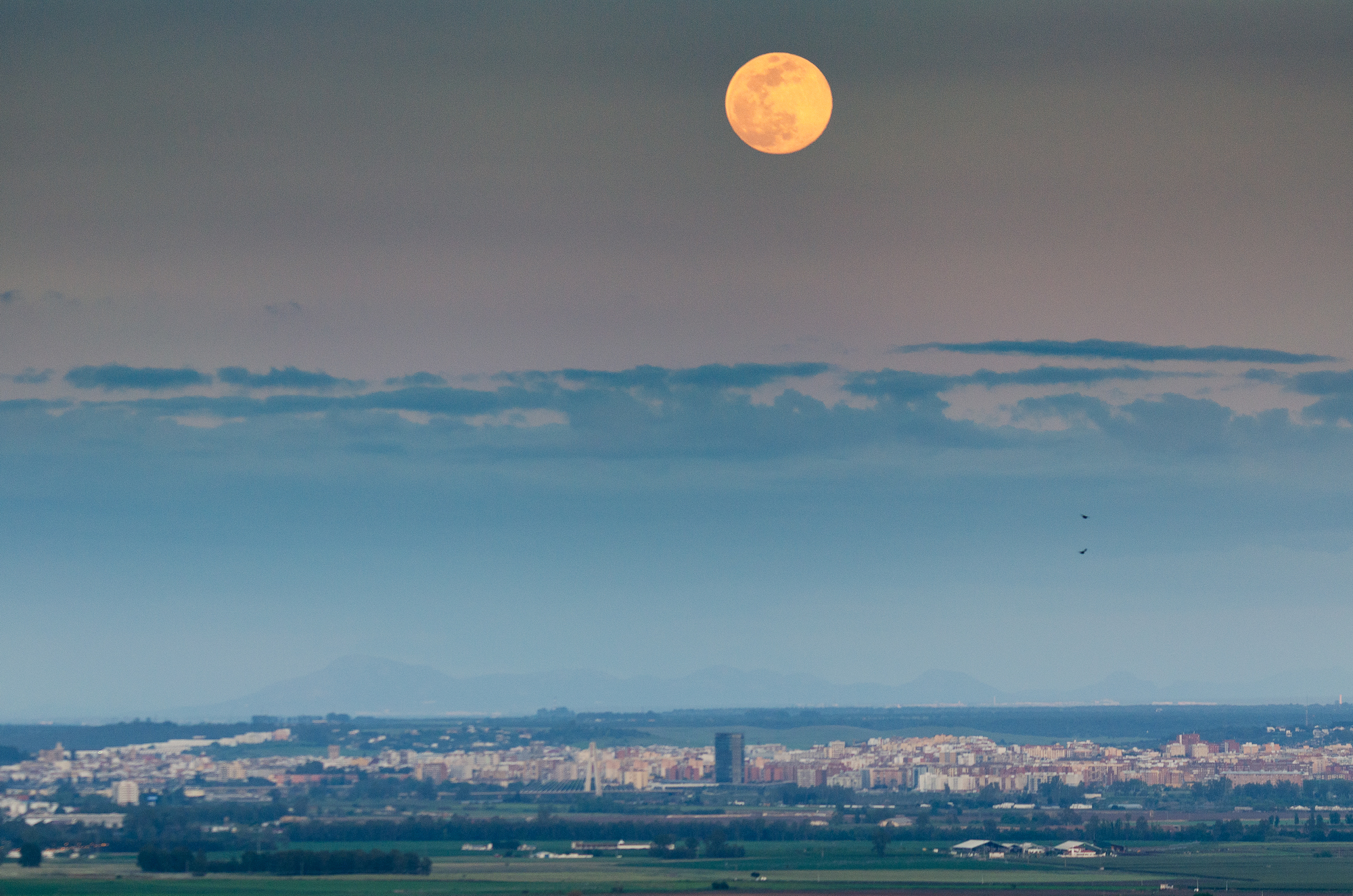Will the 'Full Flower Supermoon' of May actually be 'super'? The experts disagree.
Is the Full Flower Moon today (May 7) really a supermoon? It depends on who you ask.
Different astronomical authorities have definitions about how big a moon needs to be to qualify as a "supermoon," which happens when the moon is at the full phase and at the closest point to Earth in its orbit, known as perigee. The closer proximity of the full moon at or near perigee can make it appear up to 7% larger and 15% brighter than the average full moon, but exactly what makes such a full moon "super" remains up for debate.
The dispute flares up every year as institutions like NASA herald the arrival of "supermoon season," which typically includes about three back-to-back supermoons. According to NASA, the full moon of May is the fourth and final consecutive supermoon of 2020, making this an exceptional year for supermoons.
Related: See the last supermoon of 2020 at its best in these webcasts
However, some experts say that May's full moon isn't a supermoon at all, and that the definition NASA uses gives too much wiggle room when it comes to how closely perigee coincides with full phase.
But critics of NASA's more lax definition of a supermoon also don't agree on the total number of supermoons in 2020. Some say there can only be one supermoon in a year, while others claim that there hasn't been a true supermoon in many years.
So, which definition is correct? Technically, none of them — or any of them, depending on who you ask. That's because the term "supermoon" has no actual definition.
Breaking space news, the latest updates on rocket launches, skywatching events and more!
"Supermoon isn't an official astronomical term, and there's no firm technical definition for it, so different sources sometimes disagree," NASA spokesman Preston Dyches told Space.com in an email.
NASA isn't alone in using a more lax definition of the term; the Old Farmer’s Almanac, which is a common source for astronomy buffs, also says that the Full Flower Moon in May is a supermoon.
"The term 'supermoon' was coined by the astrologer Richard Nolle in 1979 and refers to either a new or full moon that occurs within 90 percent of perigee, its closest approach to Earth in a given orbit," NASA said in a statement. (As Space.com skywatching columnist Joe Rao points out, that was a somewhat arbitrary definition.)
"Under this definition," NASA continued, "in a typical year there can be three or four full supermoons in a row, and three or four new supermoons in a row. For 2020, the four full moons from February through May meet this 90 percent threshold."
The Old Farmer's Almanac acknowledged that the May moon is a little smaller than the three proceeding full moons in 2020, but said the moon still is just big enough to meet the supermoon mark. "The difference in distance between its orbit and April's — about 2,500 miles [4,000 kilometers] — is not much in the grand scale of space, so you will still see a bright, beautiful supermoon," the website said.
Yet the Farmer's Almanac (not to be confused with the Old Farmer's Almanac, as these are different entities) says that this supermoon definition has not been met with the latest full moon.
The Farmer's Almanac said the 90% definition is too loose, as supermoons of that magnitude will happen as many as five times a year. Representatives argued that the 90% definition will "water down" the significance of a supermoon, and said that readers complain to them when the term "supermoon" appears frequently in media outlets.
"Supermoons should only be applied to 'extreme' perigees, in which the full moon approaches to a distance of 221,472 miles [356,425 km] or less," the Farmer's Almanac said in a statement. "Between the years A.D. 1500 to 2500, this condition is met only 14 times, or on average once about every 71 years." (On average, the distance from Earth to the moon is about 238,855 miles, or 384,400 km.)
According to the Farmer's Almanac, the last time a full moon came that close to Earth was Jan. 15, 1930, when it was 221,454 miles (356,425 km) from Earth. The next time won't be for another generation, until Dec. 6, 2052 (with a perigee of 221,469 miles or 356,420 km.)
The term "supermoon" first became popular almost a decade ago, when the full moon had a perigee only within 126 miles (203 km) of its closest possible approach to Earth on March 19, 2011. But no matter what definition you use, the change in apparent size and brightness is subtle at best. At most, a supermoon appears only 7% larger and 15% brighter than usual. Given the moon's small size in the sky — you can easily cover it over with your thumb, at the end of an outstretched arm — that isn't much change.
Editor's note: If you have an amazing supermoon photo you'd like to share for a possible story or image gallery, you can send images and comments to spacephotos@space.com.
- How the 'supermoon' looks (infographic)
- Supermoon secrets: 7 surprising big moon facts
- 'Super Pink Moon,' the biggest & brightest of 2020, stuns skywatchers
Follow Elizabeth Howell on Twitter @howellspace. Follow us on Twitter @Spacedotcom and on Facebook.
OFFER: Save 45% on 'All About Space' 'How it Works' and 'All About History'!
For a limited time, you can take out a digital subscription to any of our best-selling science magazines for just $2.38 per month, or 45% off the standard price for the first three months.

Elizabeth Howell (she/her), Ph.D., was a staff writer in the spaceflight channel between 2022 and 2024 specializing in Canadian space news. She was contributing writer for Space.com for 10 years from 2012 to 2024. Elizabeth's reporting includes multiple exclusives with the White House, leading world coverage about a lost-and-found space tomato on the International Space Station, witnessing five human spaceflight launches on two continents, flying parabolic, working inside a spacesuit, and participating in a simulated Mars mission. Her latest book, "Why Am I Taller?" (ECW Press, 2022) is co-written with astronaut Dave Williams.





